Diseases and pests of hydrangeas
|
Content: Description and methods of treating hydrangea diseases
Hydrangea pests and their control |
Video with descriptions and methods of treating hydrangea diseases:
You cannot find a garden or flower garden in which the beautiful hydrangea is not grown. The lush, green foliage of the shrub contrasts effectively with the numerous shades of the inflorescences.
The culture is quite resistant to diseases and pests, but still requires care and attention. With all the efforts of flower growers to protect green pets from illnesses, sometimes problems arise with this. The vagaries of the weather, improper care, and infected planting material lead to the occurrence of all kinds of diseases and pest damage. In paniculate, large-leaved and tree-like hydrangeas, the diseases, pests and their control are the same.
Hydrangea diseases and their treatment
The normal growth and development of the plant is threatened by fungal, viral, bacterial diseases, and parasite invasions.
The occurrence of hydrangea diseases is influenced by: high humidity, air temperature, dense plantings, and improper feeding.
Important! Before treating a plant for a particular disease, the causes of the disease are analyzed, they are eliminated, and only after that health procedures begin.
Hydrangea chlorosis
|
Chlorosis on hydrangea leaves |
Signs of defeat
At the initial stage of the disease, the leaf blades become light yellow, the veins remain bright green. Over time, the leaves and buds become deformed.
The cause of the disease is a sudden change in weather from warm to cold with rain. In this case, a lot of moisture accumulates in the soil, the roots turn sour, the vegetative bush stops growing, and the plant cannot absorb iron in sufficient quantities.
Treatment options
- if there is a lack of iron in the soil, apply products containing iron in chelated (digestible) form: “Iron Chelate”, “Ferovit”, “Anti-chlorosis”, “Agrecol”, “Brexil”. In case of minor damage, it is enough to water the plant once; in case of advanced disease, 2-3 times of treatment will be required;
- Watering the diseased plant three times at the root with a solution of iron sulfate (40 g) in 1 liter of water is effective against chlorosis;
- A solution of iron sulfate (2 g) and citric acid (4 g) shows a good result. Dilute in 1 liter of water, bring the working solution to 5 liters, water at the root. Citric acid will acidify the soil, which will help the plant absorb the necessary microelement. Before applying the medicinal composition, water the hydrangea;
- When growing in insufficiently acidic soil, it is also difficult for the plant to absorb iron. Increase soil acidity with aluminum sulfate;
Important! Treatment of hydrangea begins after waiting for warm weather without precipitation.
To prevent chlorosis it is necessary:
- periodically acidify the soil;
- limit the plant in nitrogen, its excess provokes the development of the disease. Do not apply a lot of fresh manure;
- Water the plantings with soft, settled water. Hard moisture during watering also leads to disease.
Hydrangea powdery mildew
|
Powdery mildew on hydrangea leaves |
Signs of defeat
Small round grayish spots appear on the upper side of the leaves, consisting of fungal spores, darkening over time. The back side turns brown and is covered with a purple-gray coating. A progressive disease will lead to premature leaf fall, deformation, weakening of shoots, and will reduce the aesthetic qualities of the plant.
The fungal disease develops in dry conditions, with high air humidity, with sharp changes in day and night temperatures. It spreads quite quickly. Excessively damp soil during periods of prolonged rain or excessive watering also leads to hydrangea disease. Thickened plantings significantly increase the area of infection.
Treatment options
If powdery mildew has settled in the soil, on a plant, a single treatment is not enough, the fungus quickly recovers. Throughout the season, multiple treatments of diseased bushes are carried out:
- in case of severe damage, the fight is carried out using the copper-containing drug “Topaz”. 2-3 hours after treatment, the process of fungal development stops. After 10 days, the procedure is repeated;
- Treatments with fungicides are effective: “Fitosporin”, “Skor”, “Alirin”.
Prevention of powdery mildew
- The planting site should be selected so as to provide the plant with morning sun, after 10 a.m. - partial shade;
- seedlings are planted at a distance of at least 1.5 m from each other;
- To destroy fungal spores, in winter or early spring, before buds begin to bloom, treat the stems with the following solution: 50 g of iron sulfate, 100 g of copper sulfate, 10 g of citric acid, 100 g of dry yeast are dissolved in a small amount of hot water. The volume of liquid is brought to 12 liters, the plants are sprayed;
- to prevent the disease from penetrating into the soil, the tree trunk area under the hydrangeas is sprinkled with wood ash, in the fall the fallen leaves are removed and burned, the fungal spores in them successfully survive the winter;
- at the end of July, fertilize with phosphorus-potassium fertilizers (spill the soil and spray at the root).
Since spring, it is useful to carry out preventive treatments of bushes with the following compounds:
- 1 liter of serum per bucket of water;
- 200 g of laundry soap in 10 liters of water;
- Dilute 2-3 furatsilin tablets per 1 liter of water.
Downy mildew (downy mildew) of hydrangeas
|
Hydrangea leaves affected by peronosporosis |
Description of the disease
The presence of small light yellow spots on the upper side of the leaf and a powdery coating on the back side indicate that the hydrangea is affected by downy mildew. Over time, the spots increase in size and turn black.
With sharp changes in day and night temperatures, a large amount of dew appears on the leaves of hydrangea. In this droplet-liquid moisture, fungal spores quickly penetrate the plant, completely taking over it.
Treatment options
It makes no sense to fight the disease by removing diseased leaves. Also, there are no effective folk recipes to combat peronosporosis.
The following chemical fungicides will help eliminate the disease:
- "Ordan";
- "Abiga Peak";
- "Previkur";
- "Ridomil";
- "Profit Gold".
Treatments are carried out by preparing a working solution according to the instructions. Treatment begins in mid-July and is carried out every 14 days until mid-autumn.
Important! If protective measures are not taken, the disease will completely destroy the plant.
Prevention of peronosporosis
The owner of the plantings cannot influence the weather conditions, but can alleviate the condition of the plant during the period of illness:
- Repeated spraying is carried out with a solution of copper sulfate (15 g) and green soap (150 g) in 10 liters of water.
Hydrangea rust
|
Rust on hydrangea leaves |
Signs of defeat
Symptoms appear on the leaves as small yellow-orange spots.As the fungal spores grow, the marks gradually turn red and turn into patterned lesions bounded by veins. When the fungal bodies mature, the lower surface of the leaves becomes covered with yellowish dust.
A fungal disease on hydrangea appears when plants are planted at a high density, which is typical when there is an excess of nitrogen in the soil.
Treatment options
- To combat the disease, powerful contact fungicides “Chlorothalonil” and “Daconil Weatherstick” are used. The first treatment is carried out in the spring. The need for re-treatment will be indicated by the appearance of the plant;
- The following fungicides are also effective against rust: Topaz, Falcon, Ordan. Before treatment, remove all affected leaves and water the plant abundantly;
- It is recommended to treat diseased bushes with copper oxychloride (40 g of product per 10 liters of water).
Disease prevention
- reduction of ambient humidity and frequency of watering, especially during periods of prolonged rain.
- proper dosing of nitrogen fertilizers. Their excess provokes disease.
Fusarium (tracheomycosis)
|
Hydrangea leaves affected by fusarium |
Description of the disease
The plant stops growing, the process of leaves turning yellow, shoots withering, and buds falling off begins.
Hydrangea becomes infected with pathogenic fungi that live in the soil. Under their influence, the root system softens and rots. Over time, the entire sap-conducting system of the bush becomes filled with a fungal mass, blocking the flow of nutrients to parts of the plant.
Treatment options
- carry out therapeutic spraying on the above-ground part of the plant with the preparations “Fundazol”, “Topsin-M”;
- They use a natural medicine infused in water: infuse nettle and celandine in water for several days, water the diseased plant at the root;
- the quick result of treating pathogens is shown by the Rovral fungicide. The drug is diluted in water according to the instructions, and the plant is treated at the root.
Important! The fungus lives on plant debris for many years. Diseased parts of the hydrangea are burned.
Prevention of fusarium (tracheomycosis)
- It is useful to irrigate the bushes with infusion of nettle (2-2.5 kg) and celandine. The grass is placed in a 50-liter container, filled with water, and left for a day. To spray plantings, the drug is diluted with water in a ratio of 1 to 5.
Septoria
|
Hydrangea leaves affected by septoria |
Signs of defeat
The disease is determined by the presence of small, irregularly shaped white spots with a dark border on the foliage. Gradually growing, the spots merge, black dots appear in the center, the leaves dry out and fall off. The stems become brown and wrinkle. Physiological processes in the plant are disrupted, flowering is poor, and the bush is not able to form many inflorescences.
The cause of infection with septoria (white spot) is a combination of high humidity and not hot (+20-25°C) temperatures.
Methods of treating the disease
- when the first signs appear, treat with the strong antifungal fungicide “Topaz”. Dilute 2 ml of the drug in 5 liters of water, spray leaves, flower stalks, and stems on all sides;
- Treatments with copper sulfate, copper oxychloride, Profit, and Bordeaux mixture are effective.
Prevention of septoria
With proper care and proper cultivation techniques, the plant develops a strong immune system, thanks to which it is able to resist any infection. Weakened, unkempt specimens are susceptible to the disease.
Preventive measures against septoria include:
- compliance with agricultural technology;
- pruning diseased shoots while capturing healthy tissue;
- loosening the soil under hydrangea;
- collection and burning of leaf litter;
- treating the hydrangea and the soil under it with a one percent solution of Bordeaux mixture, repeating the procedure in early spring;
- preventive treatment of seedlings with fungicide solutions, the concentration of which is weaker than medicinal compounds.
Don't forget to read:
Forming paniculate hydrangeas on a trunk with your own hands ⇒
Ring spot
|
Ring spot |
Description of the disease
The disease appears as ring-shaped brown spots on hydrangea leaves. Ulcers form on the back side. Over time, the leaf plates become deformed and curled, the plant is stunted in growth, forms weak inflorescences or does not bloom at all.
A viral disease characteristic of hydrangeas. It can be transmitted when pruning a plant with a dirty tool or through sap.
Treatment options
Viral diseases are fought by cutting out diseased parts of the plant (leaves, shoots).
If the entire bush is affected, it must be destroyed; there is currently no treatment. To prevent the disease from entering the territory, when planting, use only healthy bushes or cuttings from an uninfected mother plant.
Prevention of ring spotting
A viral disease affects weakened, abandoned plants that do not receive sufficient care and grow in unfavorable conditions. The disease can be introduced by infected planting material or infected garden tools; it is easily transmitted by pests.
In order to prevent ring spotting, planting material is treated with copper sulfate; in autumn and spring, the bushes and the soil under them are sprayed with Bordeaux mixture.
Hydrangea pests and their control
Aphid
|
Aphid colony |
Signs of defeat
Having settled on the plant, the tiny insect sucks out the cell sap, leaving behind a sugary secretion, attracting ants and causing the appearance of sooty fungus. Reproducing at breakneck speed, colonies of green insects cover the entire affected bush. By parasitizing, they absorb all the juices of the plant, as a result it stops growing, the leaves and shoots are deformed, the upper parts of the stems die off.
Ladybugs feed on aphids. Planting marigolds around the hydrangea will be a natural prevention against the pest.
Ways to control aphids on hydrangea
- at the initial stage of infection, avoiding the use of chemicals, wash off the aphids with a powerful stream of water, trying not to damage parts of the hydrangea;
- treatment with soap solution is effective;
- treatment with celandine tincture shows good results. Pour 300 g of raw material with a liter of water, cover with a lid, put the container in a dark place to infuse for a day. All parts of the plant are treated with the finished product;
- in advanced cases, insecticides are used: “Fitoverm-M”, “Aktara”, “Iskra”, “Zubr”, “Akarin” according to the instructions;
- dusting the bush with tobacco dust or spraying with a decoction helps in combating the pest.
Important! The favorite location of aphids is the reverse side of the leaf. When spraying, pay special attention to spraying hard-to-reach places.
spider mite
|
Spider mites on hydrangea leaves |
Description of the pest
The parasite settles on the back side of leaves. The mite is so small that the initial stage of infection is difficult to notice. It manifests itself by the appearance of small yellow dots, gradually merging into marble patterns.When neglected, leaves and shoots become covered with small cobwebs. With a large invasion of parasites, plant movement is observed.
In hot weather and low humidity, the mite actively reproduces, entangling the entire plant with a web in 5-7 days. When the air temperature drops below +19°C, the female insects become inactive and the spread of the pest stops.
Ways to combat spider mites
- in case of minor damage, treat the hydrangea with a soap solution;
- a heavily affected bush is sprayed with drugs that act directly on ticks: “Akarin”, “Molniya”, “Fitoverm-M”.
Root nematode
|
Hydrangea root system affected by root-knot nematode |
Signs of defeat
The presence of microscopic worms - root-knot nematodes - can be judged if the growth and development of hydrangea stops. Red swellings on the roots and bases of shoots indicate the presence of a pest. The worms make their way into the trunks through the roots, multiply, and poison the plant with dangerous secretions. If you do not fight the pest, there is a risk of losing the plant.
Ways to fight
The presence of a pest indicates contamination of the soil, so the soil on the site needs to be treated:
- The root-knot nematode can be overcome by special fungi that parasitize worms. To increase their quantity in the soil, the soil is specially sweetened with sugar;
- A few days before planting the seedling, the soil at the planting site is treated with Actofit and Fitoverm preparations.
Leaf beetle
|
Leaf beetle |
Signs of defeat
Small beetles that feed on leaves and chew holes in the stems. They damage the above-ground part of the plant and the root system. They gnaw out entire areas on the surface of the leaf blade and are able to eat entire leaves, leaving only the veins.
Ways to fight
- beetles and their larvae are systematically collected by hand and destroyed;
- the soil around the bush is dug up and treated with systemic insecticides.
Do not miss:
Shellfish
|
Slug eating hydrangea leaf |
Signs of defeat
The pest loves to feast on the juicy, fleshy leaves of hydrangea. It can be easily identified by damaged, eaten parts of the plant. Slugs hide in the axils of leaves and grow in shady, damp places where plantings are too frequent and dense.
Ways to fight
- get rid of shellfish by collecting them with your hands, destroying egg clutches in the axils of the plant;
- scatter granules of the Anti-slug preparation into the tree trunk according to the instructions;
- They use “Molluscicides” - means to combat slugs, mollusks, and snails.
Do not miss:
Prevention of hydrangea diseases
Timely prevention is the key to plant health. It is easier to spend more time preventing the onset of disease than to then fight the infection throughout the season or lose the plant altogether.
Improper care, including provokes the occurrence of diseases and pest invasions:
- Frequent, excessive watering leads to rotting of the root system and drying of the leaves. The soil under the hydrangea should be constantly moist, but not soggy;
- excessive fertilization throughout the season. Use fertilizers intended directly for hydrangeas. They contain balanced nutrition for plants;
- Failure to maintain the required distance between plantings leads to crowding, which makes it difficult to ventilate the plants.
Regular implementation of general preventive measures will help prevent the occurrence of many diseases:
- Digging up tree trunk circles in the fall on a spade bayonet so that the pests in the ground are destroyed by winter frosts.
- Collection and destruction of plant residues, they may contain infection or pest larvae.
- After planting healthy planting material, an infected seedling will introduce the disease to the entire area.
- Selection of balanced fertilizers. In the spring, the emphasis is on nitrogen-containing fertilizers, in the summer on potassium-phosphorus mixtures, in the fall on phosphorus compounds.
- Ensuring the correct irrigation regime. Hydrangea should not be kept on dry rations, but it should not be flooded either. The soil in the tree trunk circle should be moderately moist.
- Timely cleansing of the tree trunk from weeds.
- Using disinfected garden tools when pruning.
- Treatment of cuts and open wounds with garden varnish.
- Timely inspection of hydrangeas for diseases and pests.
- Protecting the bush from the scorching sun, drafts, and cold winds.
- Carrying out preventive treatments with copper sulfate in the spring.
Similar articles:
- Diseases of roses and methods of their treatment ⇒
- Description and treatment of raspberry diseases ⇒
- Treatment of strawberry diseases ⇒
- Main gooseberry diseases and methods of treating them ⇒
- How to detect and cure diseases of apple trees ⇒
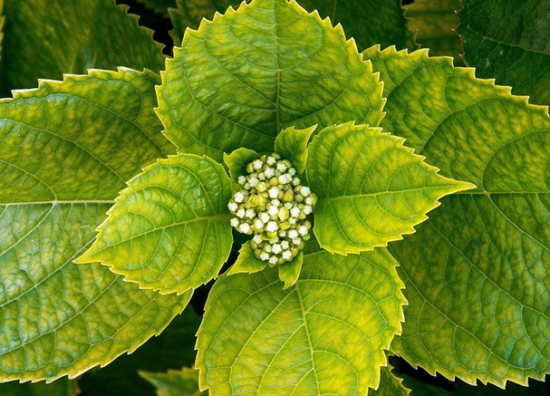
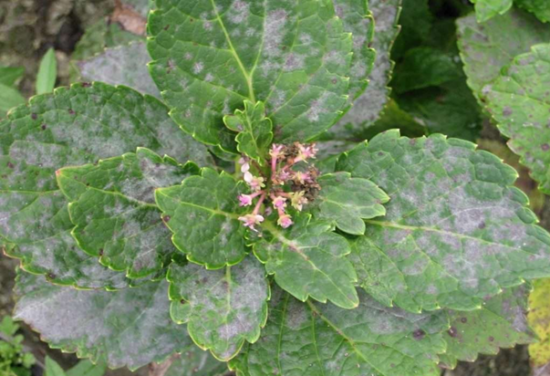
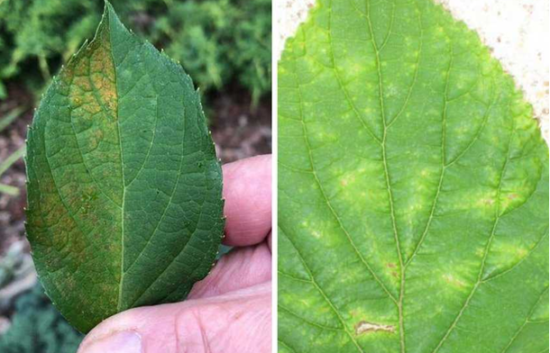
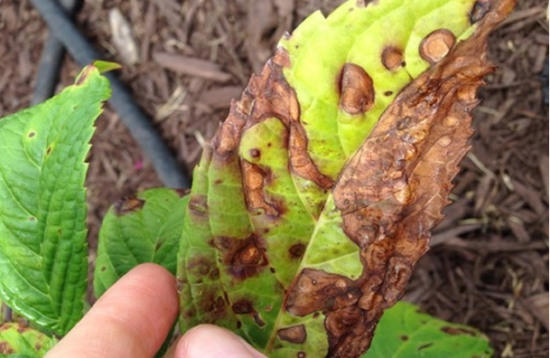
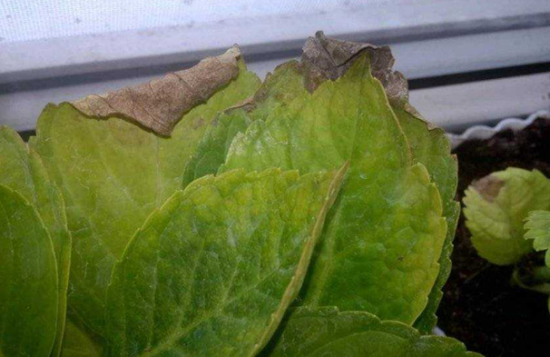
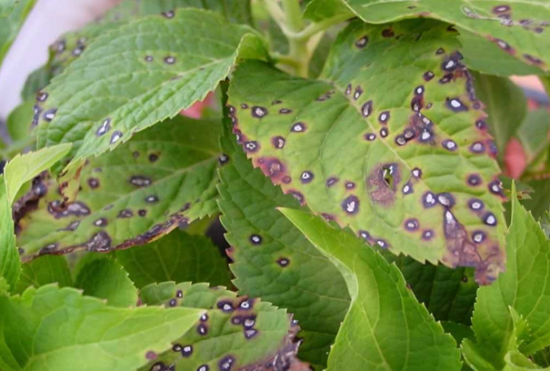
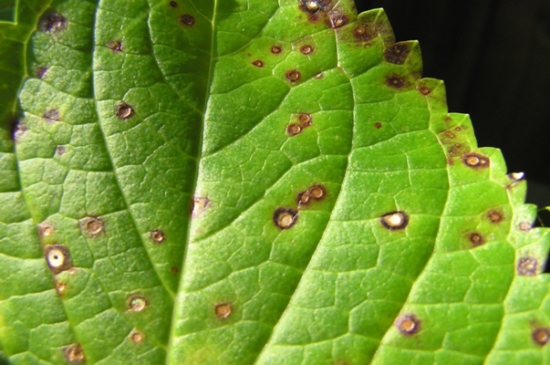
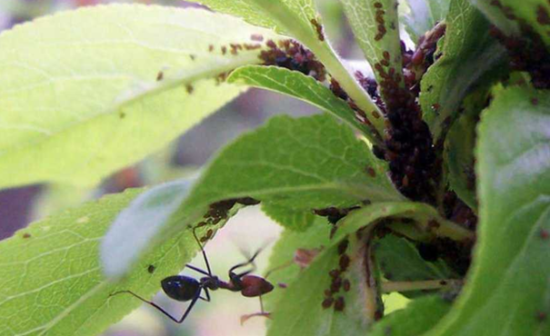
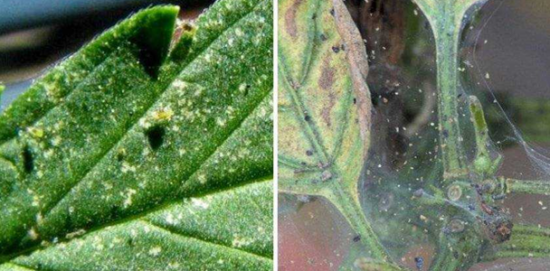
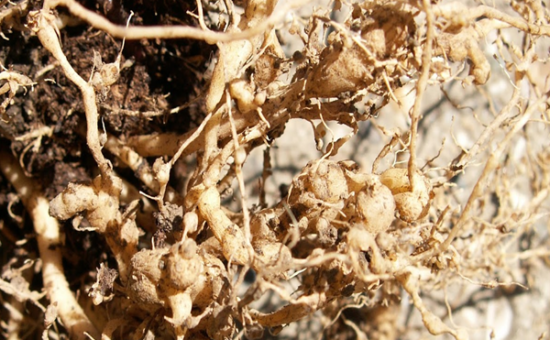
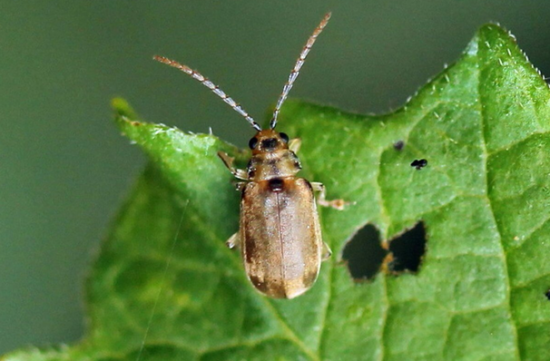
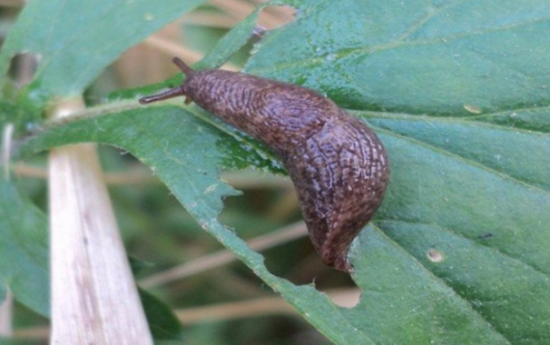

 (2 ratings, average: 4,00 out of 5)
(2 ratings, average: 4,00 out of 5) CUCUMBERS NEVER GET SICK, I'VE BEEN USING ONLY THIS FOR 40 YEARS! I SHARE A SECRET WITH YOU, CUCUMBERS ARE LIKE THE PICTURE!
CUCUMBERS NEVER GET SICK, I'VE BEEN USING ONLY THIS FOR 40 YEARS! I SHARE A SECRET WITH YOU, CUCUMBERS ARE LIKE THE PICTURE! You can dig a bucket of potatoes from each bush. Do you think these are fairy tales? Watch the video
You can dig a bucket of potatoes from each bush. Do you think these are fairy tales? Watch the video
 How our fellow gardeners work in Korea. There is a lot to learn and just fun to watch.
How our fellow gardeners work in Korea. There is a lot to learn and just fun to watch. Eye trainer. The author claims that with daily viewing, vision is restored. They don't charge money for views.
Eye trainer. The author claims that with daily viewing, vision is restored. They don't charge money for views. A 3-ingredient cake recipe in 30 minutes is better than Napoleon. Simple and very tasty.
A 3-ingredient cake recipe in 30 minutes is better than Napoleon. Simple and very tasty. Therapeutic exercises for cervical osteochondrosis. A complete set of exercises.
Therapeutic exercises for cervical osteochondrosis. A complete set of exercises. Which indoor plants match your zodiac sign?
Which indoor plants match your zodiac sign? What about them? Excursion to German dachas.
What about them? Excursion to German dachas.